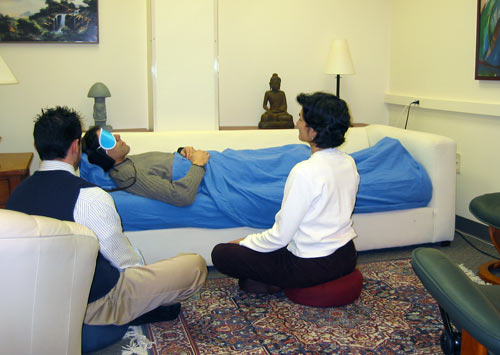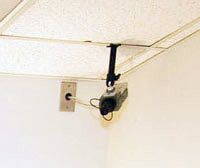In the Name of Science
Human Hallucinogen Research: Guidelines for Safety
Jun 2009
Citation: Erowid Crew. "In the Name of Science: Human Hallucinogen Research: Guidelines for Safety" Erowid Extracts. Jun 2009;16:20.

|

|

|
While physiological safety considerations pertaining to psychedelics research have received attention in recent years,3 Johnson et al. do an admirable job of examining the unique psychological and contextual factors ("set and setting") inherent with their use. The importance of volunteer selection and preparation, interactions between the volunteer and study personnel, and the careful creation of the study site are all discussed. Creating a context of safety, trust, and rapport between the researchers and subjects is emphasized as a strategy for preventing and counteracting adverse reactions. Reviewing previous research giving psychedelics to human subjects, the authors found that extensive preparation and interpersonal support led to "fewer adverse psychological reactions, such as panic reactions and paranoid episodes, and increased reports of positively valued experiences".1
Despite being very rare, bad trips leading to dangerous behavior and the even less likely possibility of prolonged psychosis or hallucinogen persisting perceptual disorder (HPPD) are identified as the most concerning risks that a researcher must prepare for. A milder but more common risk is that of the subject leaving the study site during the session.
Written in a clear prose that should be accessible to most Erowid members, this article is the most up-to-date peer-reviewed overview of the physical and mental risks associated with psychedelics. Well worth reading for anyone interested in this field of research, it includes practical information about preparing for and conducting sessions that are also applicable for the deliberate use of psychedelics outside of a research setting.
References #
- Johnson MW, Richards WA, Griffiths RR. "Human Hallucinogen Research: Guidelines for Safety". J Psychopharmacol. Aug 2008;22(6):603-20.
- Griffiths RR, Richards WA, Johnson MW, et al. ""Mystical-type Experiences Occasioned by Psilocybin Mediate the Attribution of Personal Meaning and Spiritual Significance 14 Months Later". J Psychopharmacol. Aug 2008;22(6):621-32
- Nichols DE. "Hallucinogens". Pharmacol Ther. 2004;101(2):131-81.

